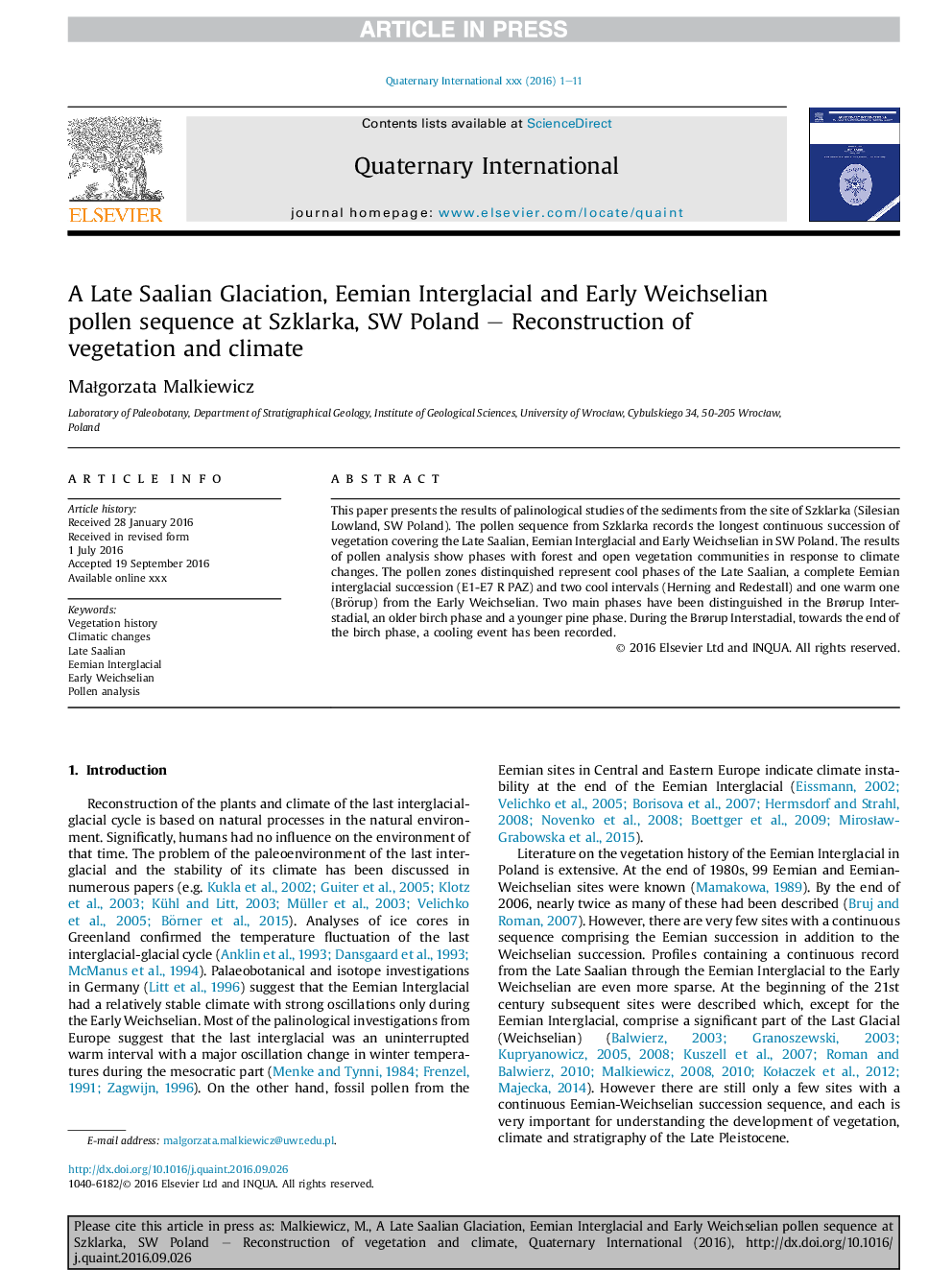| Article ID | Journal | Published Year | Pages | File Type |
|---|---|---|---|---|
| 7450536 | Quaternary International | 2018 | 11 Pages |
Abstract
This paper presents the results of palinological studies of the sediments from the site of Szklarka (Silesian Lowland, SW Poland). The pollen sequence from Szklarka records the longest continuous succession of vegetation covering the Late Saalian, Eemian Interglacial and Early Weichselian in SW Poland. The results of pollen analysis show phases with forest and open vegetation communities in response to climate changes. The pollen zones distinquished represent cool phases of the Late Saalian, a complete Eemian interglacial succession (E1-E7 R PAZ) and two cool intervals (Herning and Redestall) and one warm one (Brörup) from the Early Weichselian. Two main phases have been distinguished in the Brørup Interstadial, an older birch phase and a younger pine phase. During the Brørup Interstadial, towards the end of the birch phase, a cooling event has been recorded.
Related Topics
Physical Sciences and Engineering
Earth and Planetary Sciences
Geology
Authors
MaÅgorzata Malkiewicz,
